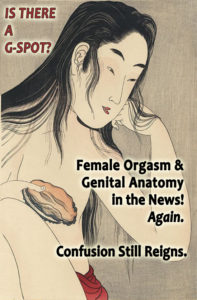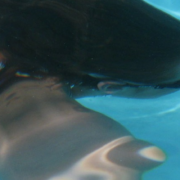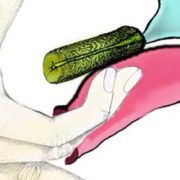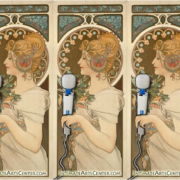Genital Anatomy in the News! Again. Confusion Still Reigns About the G-Spot.
Part One. So Is there Or Is There Not A G-Spot?
Due to t he depth and complexity of information in both the original article and the media interpretation of it, I’ll be posting a series of blogs addressing various aspects of the female anatomy and orgasm debate and discussion.
he depth and complexity of information in both the original article and the media interpretation of it, I’ll be posting a series of blogs addressing various aspects of the female anatomy and orgasm debate and discussion.
Confusion Still Reigns
Is there a g-spot? A recent scientific article says no. Media outlets have hopped on that article and are promoting the idea that there’s nothing to play with inside a vagina. I say that while there is no structure that be accurately named the g-spot, there are indeed some delicious, erectile structures that can be accessed from inside the vagina to the great delight of the vagina owners.
Sad to say, we continue to have confusion and dissent among ‘experts’ as well as translation problems as press takes information from scientific journal articles and interprets (and often misstates it) for the general public.
After reading both the scientific article that started the furor and various media reports that paraphrase, misunderstand and twist the data, I’m ready to weigh in with my own sexpert opinions based on my education and clinical experience as a former certified nurse-midwife and gynecology practitioner, plus my current experience as a sexuality teacher and author.
The Anatomy of Sex
Let’s begin with the science—Anatomy of Sex: Revision of the New Anatomical Terms Used for the Clitoris and the Female Orgasm, by sexologists Vincenzo Puppo and Giulla Puppo, published in the forthcoming issue of Clinical Anatomy. (And, by the way, media folk, this is a literature review, not a study.)
One aspect of their basic argument is that sexologists, scientists and health care providers should use anatomically correct terminology. I agree insofar as terms such as G-spot and internal/inner clitoris are inaccurate and best not used. I disagree with the scientists, however, about what terms we should be using instead, what’s actually there, and how it operates.
The Female Erectile Network
As I point out in my book, Women’s Anatomy of Arousal: Secret Maps to Buried Pleasure, women have what I call the Female Erectile Network: a set of interconnected but separate erectile structures made up of the three parts of the clitoris, the paired vestibular bulbs, the urethral sponge and the perineal sponge. They are connected both functionally and structurally. While the Puppos’ article discusses the three parts of the clitoris and the vestibular bulbs, they neglect to consider the more internal erectile structures: the urethral and perineal sponges. These are important components of the female erectile network. While the Puppos are proposing “female penis” for the descriptor of this collection of erectile structures, I strongly believe Female Erectile Network is more useful and descriptive and far less confusing then naming a female body part after a male one.
While it’s beyond the scope of this article to go into detail about each of the female erectile structures, I do want to point out a few salient bits of information about the network. Pound for pound and inch for inch, women have just as much erectile tissue as men do. Each of the network’s structures is composed of erotically responsive erectile tissue, and with proper stimulation, each can become engorged. While women can become aroused and orgasmic with only some of the network activated, for maximum pleasure, get the whole network engorged. When all of the separate structures are engorged, the erectile network becomes like a snug and stretchy cuff of delightfully responsive equipment. Getting one component stimulated and engorged is good. Getting the whole network puffed up and pleasured is way better!
Let me go into a bit more detail about the urethral sponge (so named in the ground-breaking 1981 book, New View of A Women’s Body). It’s also known as the female prostate, since embryologically it’s formed from the same tissue that becomes the prostate gland in males. It’s composed of spongy erectile tissue that forms a cylindrical tube that surrounds the tube of the urethra. It’s rather like a roll of paper towels, with the urethra being like the cardboard tube, while the erectile tissue is like the paper towels. When unaroused, it’s as if you’re near the end of the roll. With proper and pleasurable stimulation, the sponge swells and becomes more like a brand new jumbo roll. The Puppos refer to the urethral sponge as the “corpus spongiosum of the female urethra,” but neglect to connect that to the ongoing controversy about whether or not there’s a g-spot.
Here’s a little-known fact lots of people miss—the underside of the tubular sponge is what in common (and incorrect) parlance is known as the g-spot. I prefer not to use that term. It is not a spot—it’s the bottom of the tube of the urethral sponge. So while I can truthfully say that the ‘g-spot’ as an anatomical structure doesn’t exist, the erectile tissue known as the urethral sponge most assuredly does. Got it? There is no g-spot, but there is a urethral sponge—an engorgeable (and potentially pleasurable) erectile tissue tube that lies just above the roof of the vagina. The Puppos are correct that the g-spot is not a part of the vagina. The urethral sponge is not a part of the vagina itself, as it lies right above the ‘roof’ (anterior wall) of the vagina. However, it can be stimulated is through the vaginal roof, so from the lay point of view it is ‘inside’ the vagina since it can be accessed that way.
And the media? Here’s an example of its hyperbolic and inaccurate response (these from Lizzie Crocker in “The Truth About Female Orgasms: Look to the Clitoris, Not the Vagina” in The Daily Beast): “A new study claims the G-spot is nothing more than a ‘scientific fraud,’” and “Thanks to the two Puppos and their clarifying study, women can finally stop digging around for their G-spots.”
WRONG! Women have erectile tissue that can be stimulated intra-vaginally, it’s just not a g-spot. It’s the bottom of the urethral sponge and I do recommend that women (and their lovers) discover it.
Who Wins The Battle of the Sexperts?
Can’t figure out which ‘sexpert’ is right? How about if you all check it out for yourselves? You can become your own expert and solve the question for yourself!
Let me invite you to do a bit of homework. (This is a shortened version of the suggested guided tour of The Succulent Sponge exploration from my book. If you own the aforementioned equipment, you can do this exploration solo. (It’s written from the female perspective.) If you don’t have female equipment of your own, you’ll need a lab partner for this experiment.
Guided Tour of the Succulent Sponge
Begin in an unaroused state. Put one or two of your fingers inside your vagina, turn the pads of your fingers up, curl them and reach up, exploring the roof.
Remember as you go on your guided tour that this is erectile tissue that you’re feeling, so during stage one of your exploration, that is, in a completely unaroused state, it won’t feel like anything in particular. Since the urethral sponge surrounds the urethra, when you push against the non-puffed tissue, you’ll really be rubbing almost directly on your urethra( pee tube). It will probably make you feel like you need to pee. For most women, this is not an erotic sensation.
Play with yourself (or get help from a partner) and get moderately aroused.
Now, feel it again. Notice the differences in size and sensation. It probably won’t feel irritating anymore, but it may not feel great, either.
Return to sexual pleasuring and get to high level arousal.
Feel inside again. When your urethral sponge is really big and puffed, you’ll be able to feel the whole two to three inch length of it. You’ll also notice its ridged or ribbed texture. If you separate your fingers a bit, you can run them along the gutters or sides of the tube. If you can reach in far enough, you’ll feel where it ends. When you play with it for awhile, you may notice that it starts to feel like a wet sponge, as if it’s full of tiny fluid-filled grapes.
If you’re using a mirror, you can see some interesting sights. If you hold your vagina open and look inside with a light, you’ll see the roof bulging boldly down into your vaginal canal. You can also note the raised circular ring that’s the end of the tube surrounding the opening of your urethra.
Pleasuring Female Parts
Here’s a little tip about pleasuring female parts: most women prefer to have their erectile tissue played with after it’s at least partially engorged. If you or your playmate are pressing the urethral sponge too early in arousal it will usually not only not feel good, it will often feel irritating. Save sponge stimulation for high level arousal and if playing with it doesn’t feel good—back out and turn up the turn on before returning to inner sponge play.
For a more detailed version of your home play assignment, detailed anatomy descriptions and unique illustrations, please see my book, Women’s Anatomy of Arousal: Secret Maps to Buried Pleasure.
In part two of Female Orgasm and Genital Anatomy in the News, I’ll look at the vaginal vs. clitoral orgasm controversy and explain why all the fuss is misguided.
For a few orgasmic pointers, I invite you to download a free Orgasmic Abundance e-book.

 For lots more details, illustrations and guides to discovering all of the female pleasure equipment, I invite you to read my award-winning book, Women’s Anatomy of Arousal: Secret Maps to Buried Pleasure.
For lots more details, illustrations and guides to discovering all of the female pleasure equipment, I invite you to read my award-winning book, Women’s Anatomy of Arousal: Secret Maps to Buried Pleasure.
For in-depth information, my recently released book, Succulent SexCraft: Your Hands-On Guide to Erotic Play & Practice expands on many of the ideas in this article, such as how to use your ‘sexcraft toolkit’ to expand your pleasure.









